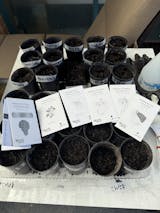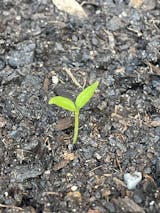-
Planting Seeds:
- Sow chilli seeds indoors about 0.5 to 1 cm deep in seed trays or small pots. Start seeds 8-10 weeks before the last expected frost in your area.
-
Transplanting:
- Transplant chilli seedlings to the garden or larger containers when they are 10-15 cm tall, with at least two sets of true leaves.
-
Spacing:
- If planting in the garden, space chilli plants about 60-9 cm apart to allow for proper air circulation.
-
Location:
- Choose a sunny location for your chilli plants. They require full sun for at least 6-8 hours a day.
-
Soil Preparation:
- Plant chilli peppers in well-draining soil with a pH level between 6.0 and 6.8. Improve soil fertility with compost or well-rotted manure.
-
Watering:
- Keep the soil consistently moist but not soggy. Water at the base of the plant to avoid wetting the foliage. Lack of watering could result in spicy fruit.
-
Fertilization:
- Fertilize chilli plants with a balanced, all-purpose fertilizer when transplanting, and then again every 4-6 weeks during the growing season.
-
Mulching:
- Apply a layer of organic mulch around the plants to retain moisture, suppress weeds, and regulate soil temperature.
-
Support:
- For larger chilli varieties or if growing in windy conditions, provide support to prevent the plants from bending or breaking. Stake them if necessary.
-
Pest Control:
- Monitor for pests such as aphids or spider mites. Use insecticidal soap or neem oil if pests become a problem.
-
Harvesting:
- Harvest chilli peppers when they reach the desired size.





